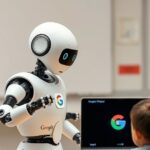
Netflix and NASA Partner for Streaming Boost
Netflix and NASA Team Up for Enhanced Live TV Netflix is collaborating with NASA to elevate its live TV offerings, promising subscribers an exciting new dimension to their streaming experience....


Netflix and NASA Team Up for Enhanced Live TV Netflix is collaborating with NASA to elevate its live TV offerings, promising subscribers an exciting new dimension to their streaming experience....

US Dismantles North Korean Remote IT Worker Operation The US government has successfully disrupted a significant operation involving North Korean ‘remote IT workers’. This scheme allowed North Korea to generate...

Proton Takes Legal Action Against Apple Over App Store Policies Proton, the company renowned for its privacy-centric applications like ProtonMail and ProtonVPN, has initiated legal proceedings against Apple, alleging anticompetitive...

Meta‘s AI Shift: Introducing Superintelligence Labs Meta has recently announced a significant restructuring of its AI division, consolidating its efforts under a new umbrella called ‘Superintelligence Labs.’ This move signals...

Tailor Raises $22M to Revolutionize ERP with Headless Architecture Tailor, an innovative startup focused on ‘headless’ Enterprise Resource Planning (ERP), has successfully secured $22 million in Series A funding. This...

Google’s AI Integration: Gemini Tools Transform Education Google is diving deeper into artificial intelligence within the education sector. They’re rolling out new Gemini tools designed to assist educators, alongside AI-powered...

Mexican Cartel Hacker Spied on FBI Official A chilling report unveils how a hacker working for a Mexican drug cartel infiltrated an FBI official’s phone. The motive? To track down...